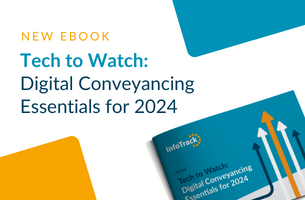With the days of full distribution of profits to partners coming to an end, Mark Waddilove, a tax director at accountants Baker Tilly, and Jonathan Cheney, a managing associate at national law firm Addleshaw Goddard, explain how a corporate member of an LLP can mitigate the tax charges on retained profits
The majority of readers are likely to be practising through limited liability partnerships (LLPs), typically operating on the tenancy partnership model, whereby partners receive income distributions throughout their term but receive no capital return when they leave (other than the return of any capital that they may have contributed to the firm).
They will have paid nothing to join the partnership and can therefore expect nothing when they leave. However, we are working with a number of firms who have moved or are currently thinking of moving towards equity participation structures, in which the capital value of the firm is realised and allocated to partners in quantifiable shares.
For many law firms, the Legal Services Act and the imminent arrival of alternative business structures (ABSs) have been the catalyst for change, but cash flow and increasing income tax rates are significant drivers for all professional practices, in whichever sector they operate, to review their current business model.
Capital partnership
The equity interests mentioned above could be traded between partners and potentially sold to third-party investors. These could entitle the holder to participate in any “capital profits” generated by the sale of all or part of the business of the firm or any of its capital assets. An equity interest could also be retained by a retired partner (either for a fixed period or indefinitely), allowing participation in capital profits realised after retirement to reward contribution to the business.
The benefits of a capital partnership model include the direct incentivisation of partners to grow the capital value of business, and the realisation of that value at the more favourable capital gains tax rates. On the other hand, realising goodwill can create divisions between different generations of partners, with the prospect of junior partners being required to pay large capital sums to retiring senior equity partners causing inevitable tensions.
It is notoriously difficult to broker a merger between a firm with a goodwill scheme and one without where no consideration is being paid. So at this point, it is worth reflecting on how a professional practice firm might be valued. The valuer’s appraisal of underlying profits plays a critical role in a business valuation, whether it is applied to a multiple or to be used as a basis for forecasting future cash flows.
Profits for limited companies are relatively easy to appraise as the accounts will show profit after the payment of salaries of directors and staff. Any payment of profits to stakeholders is shown separately as a dividend.
For partnerships or LLPs, profitability in the accounts is shown before the deduction of any payments to partners, with the resulting surplus being allocated to partners. This allocation reflects not only remuneration for the performance of the partner’s role in the business, but also a return in their capacity as a stakeholder (akin to a dividend).
Hence, to appraise underlying profitability, the valuer needs to make a judgement as how this allocation should be split between partner “salaries” and the distribution of surplus profits. This can be approached in a number of ways, but it inevitably adds another layer of subjectivity to the valuation. This makes the valuation of a professional practice more challenging.
Key to the future
These issues have led some firms to start considering how they would share capital profits on a capital event without actually changing their structure. Some are contemplating updating their LLP agreements to include a “phantom” or “shadow” equity scheme in anticipation of future change. This raises interesting issues regarding the division of equity.
While full equity partners may consider that the equity should belong to them, an external investor is likely to require incentives to be awarded to the junior partners, who will be seen as key to the future of the business, and the need to lock them in will be high on the investor’s agenda. The most senior partners will also be conscious that they may well retire before a capital event occurs, and will be keen to incorporate some form of “anti-embarrassment” provision.
It is much easier to consider these complex issues objectively without the pressure of a material capital event in prospect. A sale or merger could stumble or even fall if these issues are not addressed well in advance of the event. Due to the wide support that is needed for a capital event, partners need to be focused on what is best for the business rather than on their own personal interests.
Drag rights
So what level of support will be required to approve a capital event? Depending on how the transaction is structured, if your partnership deed or members’ agreement does not include express provisions, unanimous consent could be required, enabling individual partners to frustrate the transaction or hold their fellow partners to ransom.
There are different ways to approach this in your constitution, including the incorporation of private equity style “drag” rights. Again, those firms who have addressed these issues in advance of any potential transaction will be well positioned and more likely to succeed in a sale, merger or flotation.
Another way in which some firms are looking to stabilise themselves, and prepare for a capital event, is through the retention of profits to build up reserves, possibly to use as an acquisition war chest. The recession has highlighted how many professional services firms found themselves under-capitalised, and while it may not be music to anyone’s ears, the days of the “full distribution” model of partnership remuneration are probably very much behind us.
Retaining profits in a partnership or LLP may not be particularly tax efficient, so a number of firms have been looking at admitting limited companies as “corporate members” to mitigate the tax charges on retained profits. Corporate members also bring many planning opportunities for the business and the partners.
Changing the tax profile
Structuring the ownership of the corporate member will require careful consideration, since it will be acquiring an interest in the partnership or LLP. This will change the tax profile of the firm. The partners could sell some or all of their capital interests to the company. A profit on a sale of a capital interest in the firm should be subject to capital gains tax. It is likely that partners will be able to claim entrepreneurs relief, with a 10% tax charge on the first £5m realised gain.
The structure by which the corporate member (Newco) is admitted would be similar to a leveraged buyout, with the partners providing the finance (although Newco can also borrow funds).
Newco could pay the partners for their capital interests out of Newco’s share of the firm’s future profits. It will be liable to corporation tax at up to 27%, but with planned reductions to 24% by 2014/15. Partners’ profit shares are likely to be reduced, but drawings and cash flow could be maintained by Newco paying each partner for his or her share of the capital interests in instalments.
In summary, a firm operating as a traditional partnership or LLP could benefit substantially from a review of its current structure. Regardless of the ultimate impact of the Legal Services Act, it will be much easier to carry out such a review, and to implement any desired structural changes, well in advance of any material capital event.













Leave a Comment